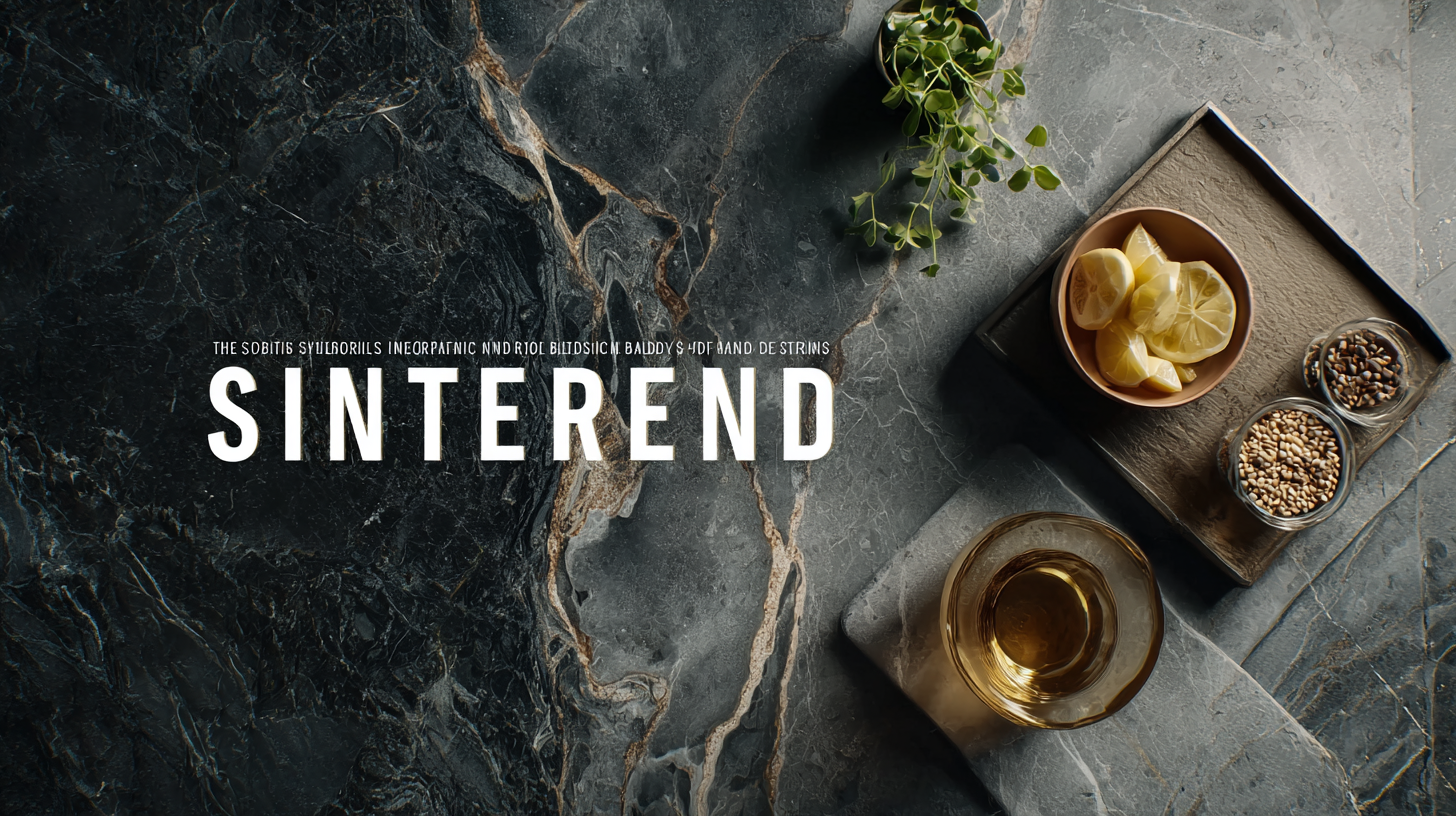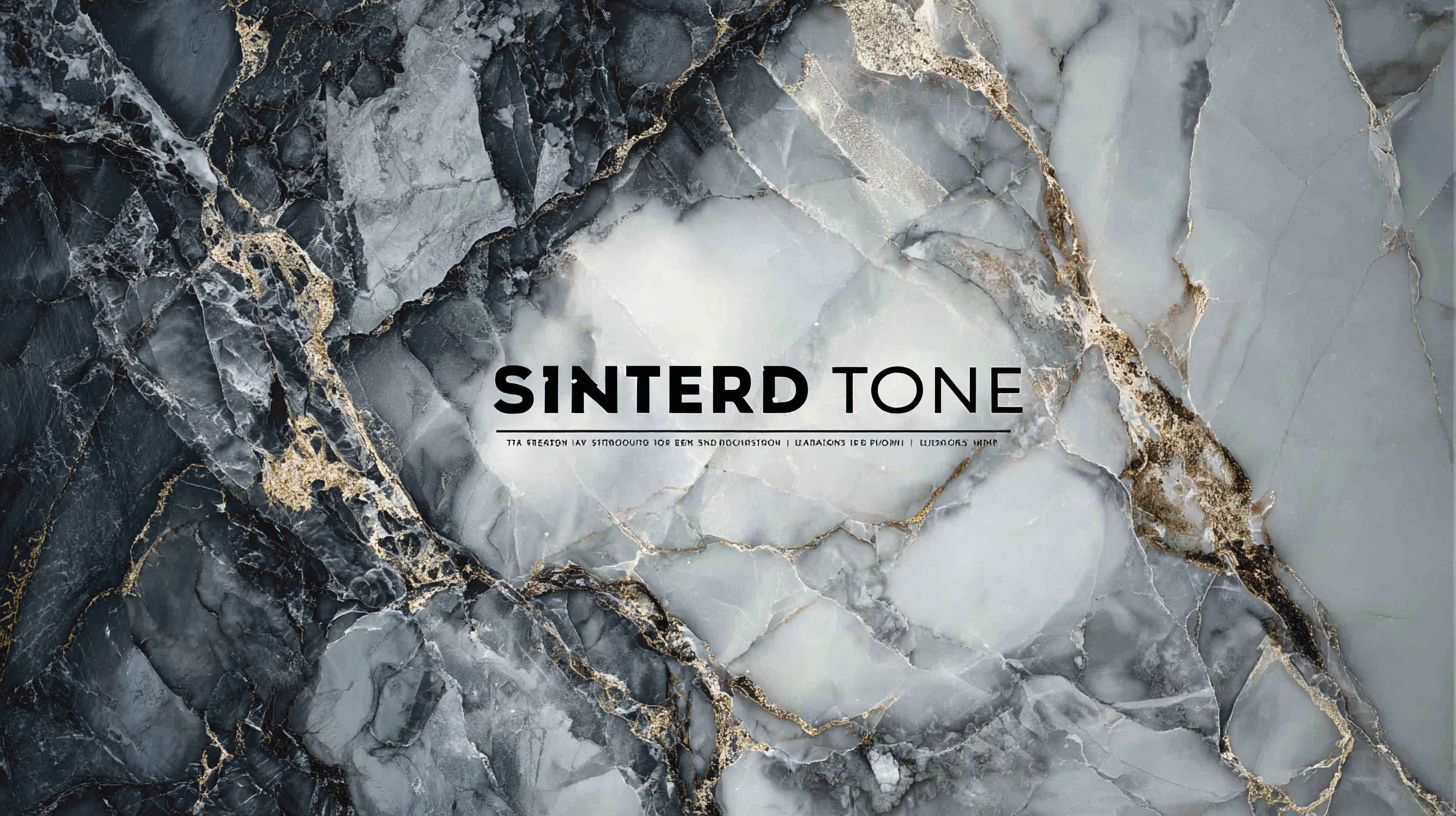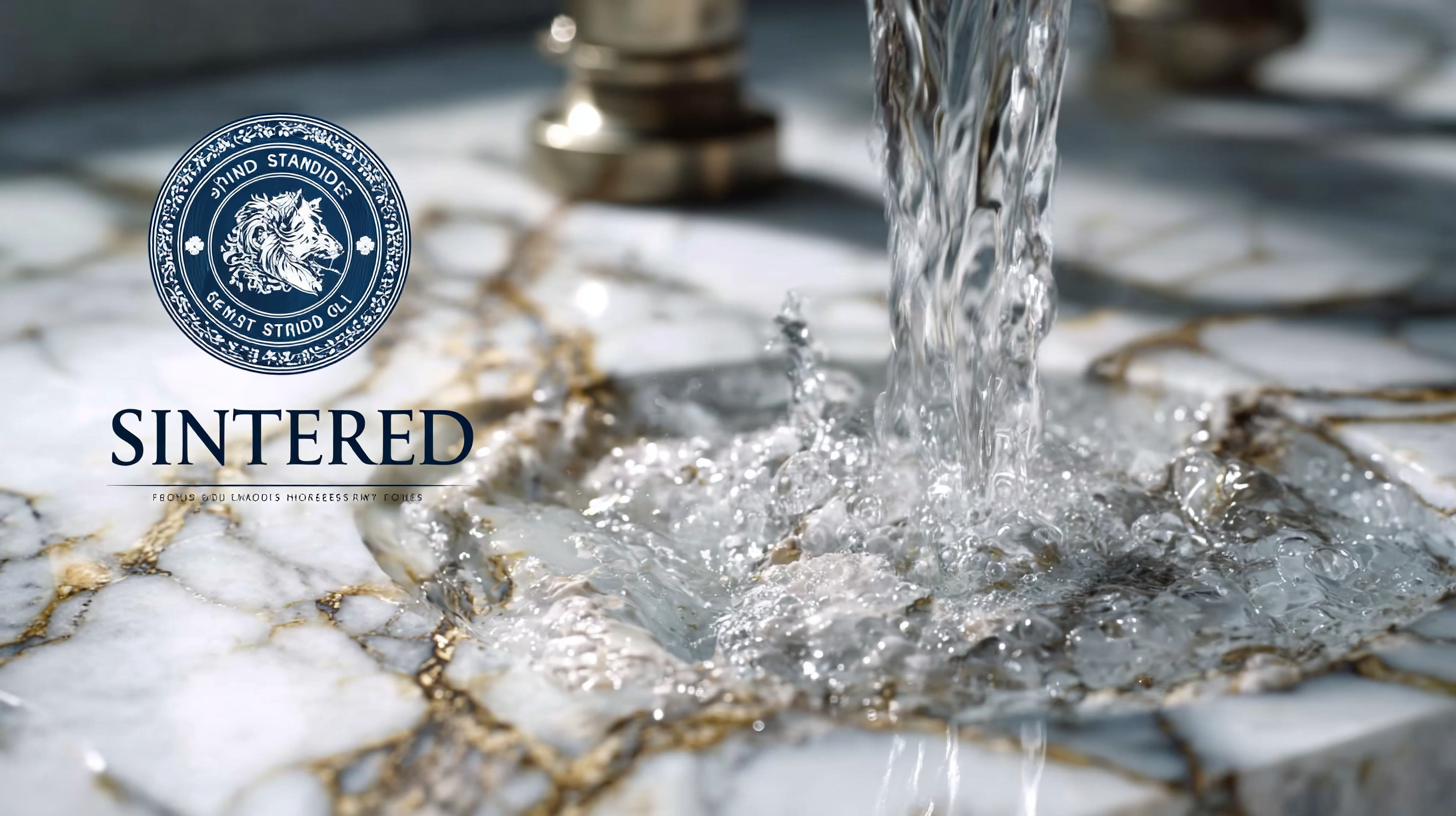Blog
Top Industry Standards for Best Sintered Stone and Five Reasons to Choose It
In recent years, Sintered Stone has emerged as a top-tier material in the architecture and design sectors, thanks to its remarkable durability and aesthetic appeal. As we look towards the technological advancements expected in 2025, it becomes crucial to understand the industry standards that define the best practices for manufacturing and utilizing Sintered Stone. This blog will delve into five compelling reasons to choose Sintered Stone over competing materials, exploring its versatility, sustainability, and innovative applications. Furthermore, we will examine alternative materials that are gaining traction, providing readers with a comprehensive overview of the evolving landscape in surface design. Join us as we navigate the future trends surrounding Sintered Stone and its role in shaping spaces for both residential and commercial use.

Key Features That Define High-Quality Sintered Stone in Today's Market
In today’s market, the quality of sintered stone is defined by several key features that set high standards for the industry. One of the most critical characteristics is its durability. According to a report by the National Institute of Standards and Technology, sintered stone can withstand high temperatures, impacts, and scratches, making it ideal for both residential and commercial applications. With a compressive strength often exceeding 30 MPa, it outperforms traditional materials such as granite and quartz, ensuring longevity and resilience.
Another crucial feature is its non-porous surface, which significantly enhances hygiene and maintenance ease. A study conducted by the International Surface Fabricators Association revealed that sintered stone exhibits a water absorption rate of less than 0.1%. This characteristic prevents the growth of bacteria and mold, making it an excellent choice for kitchens and bathrooms. Moreover, the versatility in design and finishes allows architects and designers to create bespoke solutions while adhering to sustainable practices, as many sintered stones are composed of recycled materials, thus benefiting the environmentally conscious consumer.
Exploring the Environmental Benefits of Sintered Stone Materials
 Sintered stone has emerged as a sustainable material choice in various industries, particularly in architecture and interior design. The process of creating sintered stone involves using natural raw materials that are subjected to high pressure and temperature, making it not only durable but also eco-friendly. Unlike traditional stone, sintered stone is manufactured to produce minimal waste, and its longevity reduces the frequency of replacements, which can help conserve resources over time.
Sintered stone has emerged as a sustainable material choice in various industries, particularly in architecture and interior design. The process of creating sintered stone involves using natural raw materials that are subjected to high pressure and temperature, making it not only durable but also eco-friendly. Unlike traditional stone, sintered stone is manufactured to produce minimal waste, and its longevity reduces the frequency of replacements, which can help conserve resources over time.
When considering sintered stone for your projects, remember these tips: ensure your material has low VOC (volatile organic compounds) emissions to promote better indoor air quality. Additionally, look for products with certifications that highlight their reduced environmental impact, such as LEED or GreenGuard certifications. Choosing sintered stone can also aid in energy efficiency, as its thermal properties keep spaces cooler in the summer and warmer in the winter, reducing reliance on heating and cooling systems.
By opting for sintered stone, you're not only enhancing your space aesthetically but also contributing to environmental sustainability. Emphasize the importance of responsible sourcing and select manufacturers who prioritize eco-conscious practices in their production processes. This way, you can be confident that your choice supports a healthier planet while enjoying the superior performance of this innovative material.
Innovative Uses of Sintered Stone in Modern Interior Design
Sintered stone is increasingly becoming a favorite choice in modern interior design, thanks to its innovative applications and aesthetic appeal. Its versatility allows it to be used for countertops, flooring, and even wall cladding, providing a seamless and luxurious finish to any space. The striking visuals—offering a range of colors and patterns—enable designers to create unique environments that reflect the personality and style of the homeowner. This material not only enhances the beauty of interiors but also offers practical benefits, such as being highly resistant to scratches, stains, and heat.
Moreover, sintered stone is environmentally friendly, often made from natural materials through sustainable processes. This makes it a perfect fit for those who prioritize eco-conscious decisions in their design choices. Additionally, its durability ensures that once installed, it can maintain its elegance and functionality for years to come. As designers and homeowners continue to seek out innovative solutions for sophisticated interiors, sintered stone stands out as a material that encapsulates both style and practicality, making it an ideal choice for modern living spaces.

Comparative Analysis: Sintered Stone vs. Traditional Countertop Materials
Sintered stone is rapidly gaining traction as a premier choice for countertops, particularly when compared to more traditional materials like granite, quartz, and laminate. One of the most significant advantages of sintered stone is its non-porous nature, making it highly resistant to stains, bacteria, and moisture. Unlike granite, which requires periodic sealing to maintain its integrity, sintered stone retains its beauty and usability without the added maintenance, ensuring that it remains pristine for years.
Moreover, the durability of sintered stone is unparalleled. It boasts superior resistance to heat and scratches compared to traditional materials. For example, while quartz can be damaged by high temperatures, sintered stone can withstand extreme heat, making it an ideal surface for cooking and baking. This resilience is complemented by its aesthetic versatility, allowing for a wide range of designs and finishes that can mimic natural stones or create a sleek modern look, surpassing the limited options often found in traditional countertops. As homeowners increasingly seek materials that blend beauty with practicality, sintered stone stands out as a compelling candidate in the countertop market.
Comparative Analysis: Sintered Stone vs. Traditional Countertop Materials
Understanding Industry Standards for Durability and Performance in Sintered Stone
Sintered stone is rapidly becoming a preferred material in architectural and interior design, thanks to its remarkable durability and performance attributes. According to industry reports, sintered stone can withstand extreme temperatures ranging from -50°C to +200°C, making it an ideal choice for kitchens and outdoor spaces. Additionally, its low porosity (below 0.1%) contributes to its stain resistance and easy maintenance, setting a new standard in flooring and countertop materials.
When choosing sintered stone, consider its resilience against scratching and chipping, which is a crucial factor for high-traffic areas. A recent study highlighted that sintered stone surfaces can endure significant wear, outperforming traditional materials like granite and quartz. To ensure you select the best product, pay attention to thickness and finish options; options ranging from 6mm to 20mm not only enhance durability but also allow for versatile design applications.
Tips: Always ask for certified test results regarding performance standards when selecting sintered stone for your project. Moreover, consider the environmental impact; many leading manufacturers are now adopting eco-friendly practices in their production processes. Choosing a product that adheres to these evolving standards can add value to your investment while supporting sustainability.
